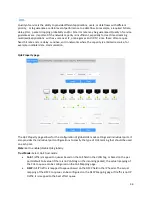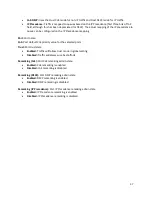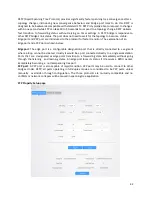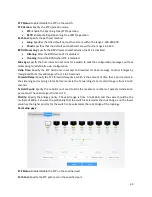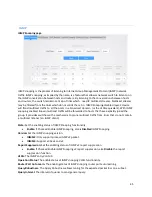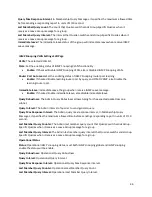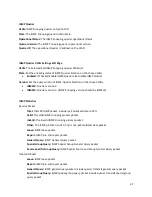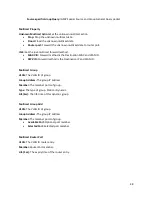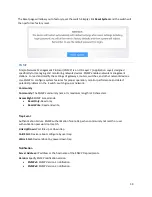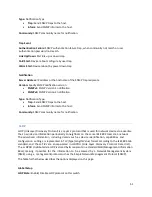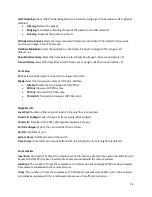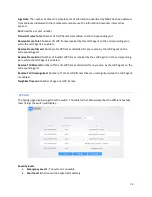
41
IP Precedence Mapping page
This page allows users to configure IP Precedence to Queue mapping and Queue to IP Precedence
mapping.
IP Precedence:
IP Precedence value
Queue:
Select a Queue ID for the IP Precedence value
STP
The Spanning Tree Protocol (STP) is a network protocol that ensures a loop-free topology for any bridged
Ethernet local area network. The basic function of STP is to prevent bridge loops and the broadcast
radiation that results from them. On Ethernet, only a single active path at a time can be
maintained between any two network nodes to avoid broadcast storm. However, spare (redundant)
links are indispensable to ensure reliability. Spanning tree allows a network design to include spare
(redundant) links to provide automatic backup paths if an active link fails, without the danger of
bridge loops, and disable those that are not part of the spanning tree, leaving a single active path
between any two network nodes. This is accomplished in the STP. A STP-enabled switch can perform the
following tasks:
1.
Discover and generate an optimum STP topology.
2.
Discover and repair failures on the network; automatically update the network topology for future
use. Local topology is generated by computing bridge configurations made by a network
administrator. Thus, if configured properly, an optimum topology tree can be generated.










